Part of a series of articles titled The Midden – Great Basin National Park: Vol. 25, No. 1, Summer 2025.
Article
Restoring Lehman Caves Infrastructure
This article was originally published in The Midden – Great Basin National Park: Vol. 25, No. 1, Summer 2025.
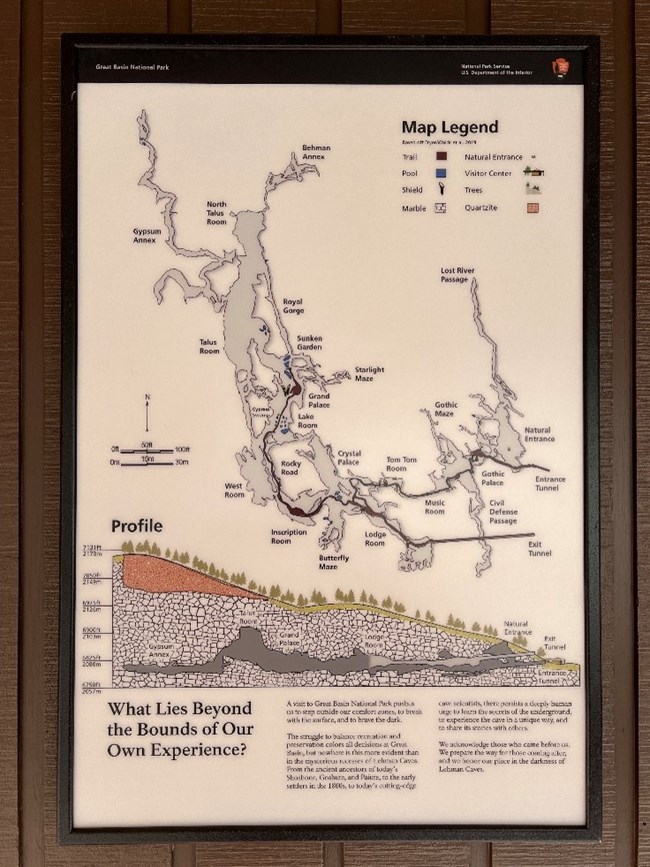
On average more than 30,000 people experience Lehman Caves each year. Since the cave opened to visitation in 1885, the tour route has been altered multiple times to make it easier for visitors to admire the underground wonders. The need for upgrades continues, and with the help of a Round 17 Southern Nevada Public Lands Management Act (SNPLMA) grant, park staff and partners have made a number of improvements.
Outside the Cave
One of the first improvements is seen even before entering the cave. On the back wall of the Visitor Center is an updated Lehman Caves Map. This Is the work of many volunteers under the direction of cave mappers Shane Fryer and Cyndie Walck. Using Disto lasers to measure distance, azimuth, and inclination, cave surveyors shot from point to point in the cave, while sketchers drew in cave walls, floors, and features. Fryer and Walck digitized the data to make an interpretive map with plan and profile views, which is on display at the visitor center and outside the cave entrance. They are also completing a final map which will have more details including cross sections of parts of the cave.
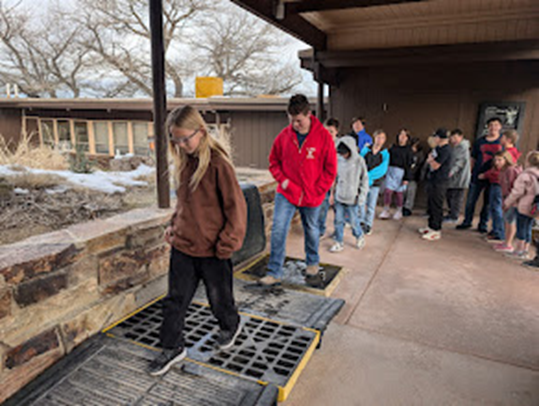
Gretchen Baker
Bats throughout the United States are threatened by White-Nose Syndrome (WNS), a fungal disease that awakes bat from winter hibernation and then causes them to starve as they don’t have enough insects to eat at that time of year. To help prevent the spread of this disease, a White-nose Decontamination station was made outside the cave that all cave visitors cross to help clean their shoes. Carpets in the tunnels also help to remove additional material.
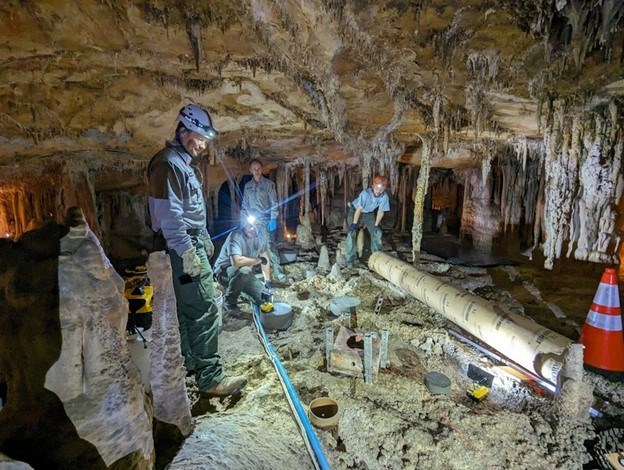
NPS/G. Baker
Numerous improvements have been made in the cave, with details below.
Cypress Swamp Walkway
Until recently, visitors crossed the Cypress Swamp on a concrete trail that was underlain by sand and rock. This trail blocked water flow, acting as a hydrologic barrier to the pools in the rimstone dams in the Cypress Swamp. During the winter of 2023-24, park staff and volunteers removed the old trail. Maintenance then installed a new trail, which is set a couple inches off the floor and allows natural hydrologic function.
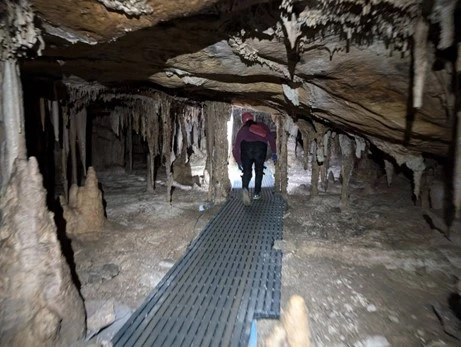
NPS/G. Baker
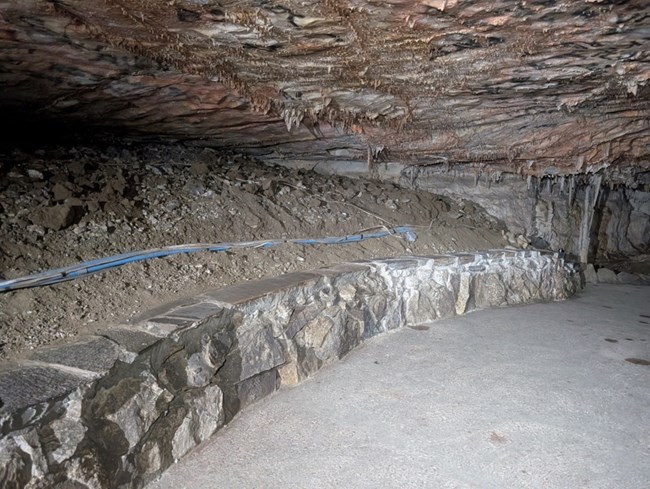
NPS/G. Baker
A short bench in the Inscription Room allowed some of the tour group to sit, but not all of it. In 2023, maintenance staff extended the bench so that the whole tour group can sit down.
West Room Door
About ten feet of cave wall were blasted to connect the Inscription Room to the West Room in 1960 for the Talus Room loop tour. The tour stopped running in 1981, and in 2006-07, the trail was removed. This large opening allowed for a different airflow pattern in this section of the cave. In 2024 park maintenance staff installed a door to restore the original airflow.

NPS/G. Baker
In 1960, stairs and a path around the pools and into the Royal Gorge were installed for the Talus Room tour. In 2006-07, the path was removed. In 2024, maintenance staff removed the stairs and built a larger viewing platform so that the tour groups can better look out into the final spectacular room of the tour. The platform includes lint curbs, or short barriers, which help keep lint on the platform rather than moving onto cave formations.

NPS/G. Baker
Throughout the five years of this project, many other cave activities occurred. Great Basin National Park Foundation interns provided distance learning about cave habitats and cave biota to hundreds of school children. Numerous lint and restoration camps were held to help clean the cave and get it ready for these projects. During these, we sprayed algae that grew near lights. We monitored cave climate using both dataloggers recording hourly data and handheld meters to measure air temperature, humidity, and carbon dioxide levels. We also conducted cave invertebrate monitoring every three months, putting out bait and seeing what cave critters were attracted to it and what the microclimate was at each of the 14 stations.
Lighting Design
A major component of this project was to prepare for a new cave lighting system. The current system was installed in 1977, and it is showing its age, with circuits that don’t work, light switches that are sticky, and some lights that are permanently out. A new lighting system was designed, with light placement by former cave specialist Rod Horrocks and electrical engineering by contractors. Park staff completed NEPA and Section 106 clearance. Inscriptions near the trail were recorded, and in some cases researched. This resulted in the visit by the family of Takeshi Ban (see this Midden article).
Final construction documents for a new cave lighting and communications system have been completed. The cost for installation exceeded the amount for this SNPLMA grant, so a new one was written and awarded as a SNPLMA Round 19 project. We hope to start that installation soon to put some new light in Lehman Caves.
Acknowledgements
The SNPLMA R17 Lehman Caves infrastructure project has been a team effort. Thanks so much to SNPLMA for funding it, to park staff in many divisions for helping make it a reality, and to the numerous volunteers who want to preserve and enjoy the cave.
Last updated: May 15, 2025
